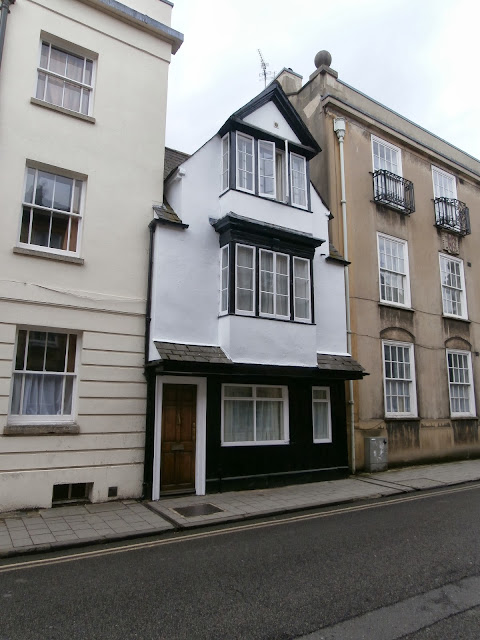Morse in Oxford
Steve and I are big fans of Colin Dexter's Inspector Morse. We've read all of the books and have the complete series of the British television show on DVD. We also enjoy the spin-offs, Inspector Lewis and the latest, Endeavour. Morse is set in Oxford, so we used a book I got on Morse's Oxford to make a tour of locations used in filming the three television series.
This blog is of the photos I took on this tour. Some of the sites aren't Morse related, but I found them interesting for one reason or another.
We were heading to the White Horse pub, which is across from the Sheldonian Theatre. As we walked through Radcliffe Square (which I shared with you in a previous blog), I stopped to take this shot of All Souls College.
As we passed the Bridge of Sighs (again from an earlier blog, and also used as a back drop in a number of Morse episodes), I mentioned to Steve that some historic old pub was nestled beyond the bridge somewhere. Steve figured we should go find it and here it is. The place was the pub version of a TARDIS. It looks tiny on the outside, but the interior seemed to go on forever.
As luck would have it, the tavern had been featured in the shows. In fact, Steve and I watched an episode of Lewis a couple of nights later and there was the Turf Tavern.
On a back street that takes you to New College I noticed this little house. It seemed so out of place amongst its neighbors.
I found this guy rather cute. He looks like he's up to some mischief. He's on the outer wall of New College. I didn't get a good shot of the college's entrance, so this is the only photo.
I thought this made a nice photo.
This is the side of Waldham College. I think I spelled that right. The photo is a bit dark, so you can't appreciate the flowers. This tour led me to really hate my camera. I should never have gone with anything other than a Canon. Every time I try a different brand, I'm disappointed.
We ended up in a lot of pubs because Morse liked his drink. We visited the Turf Tavern, White Horse, Lamb and Flag and another just down the street from the bicycle I photographed (I for oft it's name). We weren't going to bother with the Eagle and Child because it was just a few minutes away from the Lamb and Flag, where we had just eaten. Then Steve read about the Inklings and we knew we had to go.
This is the spot where the Inklings met. We really liked this pub. We even helped the bartenders come up with some questions for their upcoming quiz night. If I lived in Oxford, this would be my local.
The fireplace made the spot cozy.
Just down the road is the Martyrs' Memorial. England became a Protestant country when Henry VIII broke from Rome and named himself the head of the Church of England. It remained Protestant during the brief reign of Henry's son, Edward VI, but when Edward's sister, Mary, became Queen, she returned the country to the Catholic Church. Mary was Henry's only surviving child by his first wife, Catherine of Aragon. Catherine was devoutly Catholic. Her nephew was the Holy Roman emperor. Mary, too,was deeply devoted to the Church of Rome. When she took the throne, she had Protestants burned at the stake. This memorial commemorates the Oxford martyrs, including Thomas Cranmer, who were burned near the spot.
This is Carfax Tower, the only remaining part of a 13th Century church. Carfax is a derivation of the French carrefour, which means crossroads. Carfax is the original center of town and is situated at the intersection of St. Aldates Street, Cornmarket Street, Queen Lane, and the High Street.
The commemorative plaque on the police station.
The police station.
The police station was the last part of our tour in Oxford. The next day, when we left town to head south to Kent, we stopped at one more Morse location, the Trout Inn. This picturesque pub is located on a branch of the River Thames in some gorgeous countryside.
Looking toward the al fresco dining area of the pub.
The branch of the river where several boats are moored.
Steve and I debated the point of this weir. He thinks the inn might be an old mill. I disagreed only because the weir isn't designed like any I had ever seen. I thought it was some kind of flood control measure, but Steve said that made no sense. The branch rejoined the river after only a few hundred feet. Now I wonder if it's a way to keep the water level higher on the other side where the boats are moored.






















Comments
Post a Comment